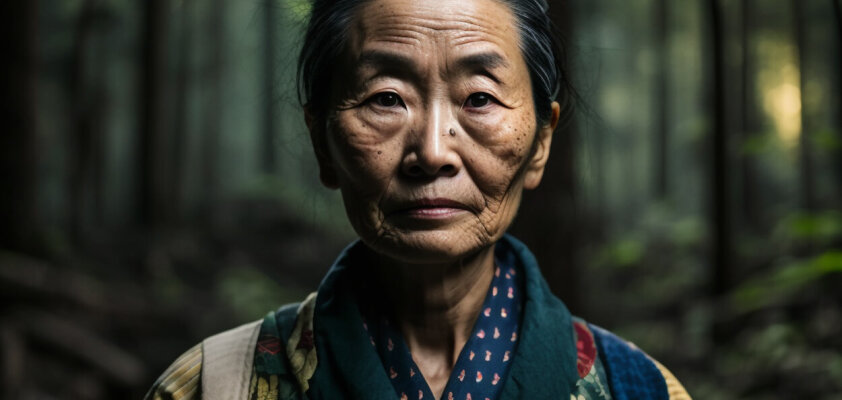Japanese form of address - A complex system of politeness

As a visitor in Japan, especially in the business sector, you will sooner or later notice that communication here works quite differently. Politeness is highly valued in Japan, which is evident throughout the language, especially in Japanese forms of address. Hierarchy and respect for elders are strongly emphasized here and should be carefully observed. If you don't want to offend anyone, you must know how to address someone properly. But how?
The last syllable is decisive
If you find yourself on the same hierarchical level (regarding age and professional status) with someone, it's quite simple: you attach the last name – or, if you know each other well, the first name – followed by the most commonly used suffix -san. This is comparable to our "Mr." or "Ms.": For example, "Mr. Yamada" becomes Yamada-san. By the way, "you" or "you" is rarely used: you address your conversation partner by name or omit it altogether if it's clear who you're talking to.
However, never use the first name of a person until they do so with you – otherwise, you risk being considered rude! The last name is not placed first in name references without reason, and only with friends do you switch to using the first name.
When introducing yourself, absolutely refrain from using any suffix. This is easy to understand when considering that in Japanese culture, others are held in higher esteem than oneself.
If you want to show particular respect to someone, usually a customer, you use the Japanese honorific -sama. Customers are often referred to as O-Kyaku-sama. This reflects the high regard customers have in Japanese society. But even in very formal situations like a meeting, this form of address is often used, and if you don't know the person's name, you can also call them O-sama. Caution: -sama is only used for individuals with significantly higher age or status and excessive use comes across as sarcastic. People who hold themselves in high regard are often made fun of this way.
The written equivalent of -sama is -shi. In Japan, this honorific is used in very formal writing for individuals one does not personally know. It's often heard in television news.
Respect for the age
It becomes more complicated when the person is older than oneself (even if it's just by a year!) or holds a higher position. Older classmates, fellow students, or even coworkers who have been with the company longer are addressed in Japan with -senpai. This form of address can also be used without the name.
Not only does the Japanese form of address change, but also the style of language depending on the age and rank of the person you are speaking to. An example of this is altered verb forms or the prefixing of -o. -O is a respectful prefix and can be used not only for names but also for objects, such as the tea in a tea ceremony. Similarly, adjectives or verbs can be modified with it to make the language more formal: From “Genki desu ka?” – “How are you?” becomes “O-genki desu ka?”.
This special form of respectful language is called Keigo and can take various forms depending on the situation and relationship with the person you are speaking to. This polite language is difficult to learn because it also affects many elements of the language such as verb forms and certain expressions, and even many Japanese people do not fully master it. Nevertheless, Keigo must be used even if the person you are speaking to is only a year older than yourself. This can roughly be compared to the difference between "you" and "you" in our language. Therefore, don't be surprised if you are introduced to a new person with their age and professional status – your conversation partner needs to know how to address them.
An interesting effect of Keigo is when you want to introduce your superior from another company: To show respect to your counterpart, you not only have to humble yourself but also your own boss. So while you would normally address him as Kachō, here you would refrain from any form of politeness and instead just use the name.
Special forms of courtesy for special people
For teachers, professors, and trainers, the Japanese honorific Sensei is reserved – but this title also applies to doctors, lawyers, and politicians. Whether to precede the name or not is up to individual preference, much like with Senpai. Often, it's appropriate to omit the name and only use the title: for example, the department head in a company may simply be called Buchō.
Many other professional groups are also addressed with their title. When referring to someone within one's own company or employees of other companies, one can use the professional title along with the honorific -san, such as Kaichō-san for the director. However, employees without managerial status do not have a title.
When moving in even higher circles, there are further Japanese forms of politeness to consider. The Emperor, Tennō, holds the title Heika – "Majesty," other members of the imperial nobility are addressed with Denka – "Highness." Kakka are ministers, and heads of state are called Daitōryō. Additionally, there are some outdated forms of address like -dono for "Master" and no kimi for nobility. These are mainly found in historical plays and films, but sometimes still in correspondence.

Cuteness is not neglected either
When speaking to children, you can attach the endearing suffix -chan to their names. Close friends or partners also address each other affectionately in this way. Cute animals or mascots can also be referred to as -chan. The origin of this form of address is that children find it easier to pronounce chan than san. For the same reason, there is the variation tan, which is considered even cuter.
Sometimes the name is shortened when -chan is attached, creating a nickname. In this case, you can even call yourself by this nickname.
While -chan is more commonly used as a feminine honorific for adults, you often hear the informal -kun among young men, especially among teenagers. However, this form of address should only be used for individuals of the same or lower status.
Summarized: Which polite form fits in which case
- -san for individuals of the same age and status
- -sama for customers and individuals of higher rank
- -sensei used among others for teachers, professors, and doctors
- -senpai for older classmates and colleagues
- -kun for younger and lower-ranking individuals
- -chan for children, partners, and close friends
Japanese form of address in the family
Family members are rarely called by their names, but instead, their respective honorifics are used. Here, too, -san is mostly used: Father is called Otōsan, mother Okaasan. The older brother is called Niichan or (O)niisan, the older sister Neechan or (O)neesan. The younger sister, on the other hand, is addressed as Imōto and the younger brother is called Otōto.
"Grandma" is Obaasan, "grandpa" Ojiisan. But don't confuse this with Ojisan and Obasan: These terms for "uncle" and "aunt" respectively have a short vowel each.
When referring to a family member of someone else, by the way, you use the same terms along with the respectful -san. However, when speaking to someone about your own family, you use different words again: For example, Haha for mother and Chichi for father.
To express a particularly close bond with one's family, you can also use -chan instead of -san. For example, Otōsan can become Otōchan and Obaasan can become Obaachan.
So what should you know about the Japanese form of address?
- Keep your conversation partner's last name and address them with it.
- Use the correct suffix: When in doubt, attach at least a -san to the name.
- If you want to be particularly polite, don't forget the prefix o- in the address.
- In the workplace, every manager has their own title: Refer to the director as Kachō-san and the department head as Buchō-san.
- Even the imperial family and the government are addressed with honorifics, such as Denka and Kakka.
- Like us, Japanese people also have special and respectful titles and terms for family members.
If you are familiar with this system of Japanese honorifics and forms of politeness, it will guide you confidently and tactfully through social life in Japan. Your Japanese friends, acquaintances, colleagues, and business partners will be impressed, and respect will surely be given to you. Best of luck on your next visit to Japan!
Here you can read about how Japanese gift-giving culture differs from ours:











-from-the-yakiyaki-grill-pan.jpg)




